Kilimanjaro peeps out from the clouds
I have been to Kenya a number of times, the first over thirty years ago. Then I was just a mzungu. Now, I write this account as a mzungu mzee.
Mzungu, (Swahili) literally translated means someone who roams around and I suppose I have done my fair share, but it is also used to mean someone with white skin. Mzee is old man or elder. Time waits for no-one!
RECONNAISANCE
Peter and I went out to Kenya to sort out the logistics for an expedition for Central Yorkshire Scouts. I wanted to provide the opportunity to climb Mt. Kenya and we had to look at the options available, as well as those for the groups trekking with camels and a community project.
Mt. Kenya's peaks are Batian 5199m (17,057ft) and Nelion 5188m (17,021ft) and separating them from each other is the Gate of the Mists. Point Lenana 4985m (16,355ft) was our target as the other two were technical climbs and beyond the capabilities of the young people we intended to take.
Image by Franco Pecchio 200812_kenya_90
L-R: Pt Lenana, Nelion, Batian
There are a number of routes onto Mt. Kenya but the three main ones are, from the West Naro Moru, Sirimon on the North West and Chogoria on the South East.
We explored all of the options and concluded that the Sirimon route would be best for the expedition, we could utilise Bantu Lodge as a base and Old Moses Camp as our bridge into the Liki North Valley where we would set camp. From there via Shiptons Camp to the summit of Pt. Lenana.
The expedition's base camp was to be at Ol Maisor in Laikipia, north-west of Mt. Kenya near Rumuruti. This was where the camel trek groups would depart/return and the community project would be based. It did mean that the mountain group would be somewhat distant from the main expedition but there was a cross-country road from Rumuruti to Nanyuki if there was a need to go to them quickly.
Peter and I arrived at Jomo Kenyatta Airport, Nairobi. I stood by the baggage carousel waiting for my bag to appear, but it didn't. I was there for ages with everyone else having collected their bags and gone, it transpired it was still in the UK. I do pack some clothes in my cabin bag but not much. We were staying at the home of Joe and Gay and very graciously Joe lent me some of his clothes until my bag arrived. I can now say that I was wandering around Nairobi in the underwear of the Irish Consul to Kenya and Tanzania!
I want to pause here a moment, because it seems an appropriate place, to say 'Thank You' to Peter (MBE), my mentor and Grand Master of Veranda Management, something to which I still aspire. Your support, guidance and network made all of this possible and I will always be indebted, just don't call it in, I could not afford it!
From Nairobi we travelled north to Nyeri. The town has a special place in the heart of Scouts worldwide as the Founder of the Scout Movement, Lord Baden-Powell, is buried at St. Peter's Cemetery, Nyeri, with his wife Olave.
B-P went to Nyeri because of ill-health in 1938 and died there in January 1941. He had a cottage built in the grounds of the Outspan Hotel which was owned by a friend, Major Sherbrooke Walker M.C.
B-P named his cottage Paxtu and it is to here and his gravesite that an estimated 50,000 people from around the world travel each year. His gravestone bears a circle with a dot in the centre, which is the trail sign for Gone Home.
The Outspan Hotel is equally famous as Sherbrooke Walker also constructed Treetops. Guests to the hotel-in-the trees start from the Outspan. Treetops is where Princess Elizabeth, in 1952, acceded to the thrones of the United Kingdom on the death of her father King George VI.



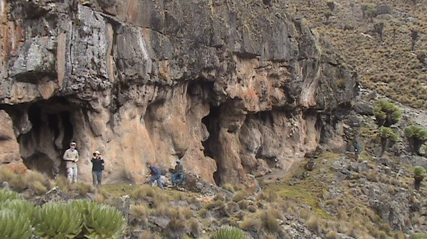
Both expeditions had boys from Starehe School, Nairobi join us. Starehe was founded in 1959 by Dr. Geoffrey William Griffin MBS OBE, Geoffrey Gatama Geturo and Joseph Kamiru Gikubu. The school started as a rescue centre in two tin huts on the outskirts of Nairobi. The school has a Scout Troop. The school's motto is 'Natulenge Juu' (Let Us Aim High).
The mountain phase was over 12 days from the base at Hillcrest School, Nairobi, to Bantu Lodge, Nanyuki, Sirimon Track to Old Moses Camp and Liki North Camp. With acclimatisation treks to the West Ridge, East Ridge, Shipton's via Mackinder, Hausberg & Oblong Tarns, Terreri and successfully summiting Point Lenana.
Will was the mountain leader and he and I, ahead of the main expedition party's arrival, went to Mt. Kenya to finalise logistics. We sourced porters at Bantu Lodge and confirmed our stay there, we sourced food and equipment in Nanyuki and went onto the mountain. We re-checked routes up to Shipton's and the campsite at Liki North.
Mt. Kenya is relatively easy to access and those doing so are very quickly at altitude. Even travelling north from Nairobi the road reaches an altitude of 2438m (8000ft), Nairobi is at 1795m (5889ft). Those accessing the mountain can be at Old Moses Camp at 3340m (10958ft) by vehicle very quickly. I have seen a number of people brought off the mountain with Acute Mountain Sickness through ascending too quickly.
We returned to Hillcrest School in readiness for the main group's arrival. The school is near to Karen, a suburb of Nairobi. Karen is where, and to give her full title, Baroness Karen Christenze von Blixen-Finecke lived, who is probably best known for her book Out of Africa, (written under the pseudonym Isak Dinesen) an account of her life whilst living in Kenya. The suburb is named after her and the Karen Blixen Museum is situated there, at the house she owned. The film Out of Africa is loosely based around her account of 1900's Kenya and shows the development of Nairobi and the Scramble for Africa during the period 1885-1914. I was fortunate to go to the Muthaiga Club that features in the film and the men-only bar, which has pictures on its walls of the pioneers from the 1900's, including Denys Finch Hatton who was the lover of Blixen.
Hillcrest School was the main base for the Scout expeditions and from where the Guerba trans-Africa trucks took the expeditions north to Laikipia or Mt. Kenya. We travelled along the edge of the Rift Valley with a stunning panorama across to Mt. Longonot a stratovolcano, which it is believed last erupted in the 1860s.
The British built a railway from Mombasa to Uganda, referred to as The Lunatic Line between 1896 and 1901. In May 1899 the railway reached a site 326km from the coast which became its major depot and later evolved into the capital city, Nairobi. From Nairobi the line had to fall 1,500ft down into the Rift Valley. It was a monumental challenge [to construct the line] which cost the lives of over 2,500 workers, some as a result of The Man-Eaters of Tsavo, which is a story well worth reading.
The mountain group travelled north from Hillcrest, stopping at the Equator for photographs, and on to Bantu Lodge where they camped. From there they travelled to the Sirimon Gate where they off-loaded equipment which was then portered up to Old Moses Camp. Walking from the gate to camp the group passed through the differing vegetation bands of coniferous plantations, giant bamboo, Afro-Alpine moorland and above 3300m the land of the giants; giant heather, giant groundsel and giant lobelia. Elephant and buffalo are ever-present in and amongst the bamboo. It gave the group an opportunity to acclimatise as they spent several hours walking the track, listening for the rustling of animals in the bamboo or seeing where elephants had used their tusks to excavate the banking for salt.
The group camped at Old Moses from where they trekked, with porters, over the ridge and dropped into Liki Valley North where a camp was set. From there a number of treks were held to acclimatise further before summiting Pt. Lenana and watching the sun rise over Africa.
David, one of the Kenyan boys, was from Nyeri. He had seen snow on the mountain but never touched it. It was the first time he had thrown snow-balls.
It was cold, freezing, on the mountain with some snow fall. Weather patterns are fairly predictable with cold, frosty [freezing] nights, cool and clear mornings, which warm through to mid-day. Clouds then begin to rise up the mountain reaching the summits in late afternoon.
There is an accepted way of diagnosing Acute Mountain Sickness (AMS), the Lake Louise Score (LLS). This is based on a rise in altitude within the last four days, the presence of a headache plus other symptoms. These are listed and scored against and indicate mild to severe AMS, with the resultant action then being taken. The LLS questionnaire was completed each day, in conjunction with a pulse-oximeter reading, by each person. Whilst there were some mild symptoms most coped with the altitude, although gastroenteritis affected some more so! Needless to say, David (who lives at 1750m / 5750ft) scored higher than others on the oximeter (oxygen saturation level). So, for example, 95%, or above, of your blood should carry oxygen to be considered normal. 92% would indicate potential hypoxaemia or a deficiency in oxygen reaching tissues in the body.
Using a pulse-oximeter to support the LLS
I remained with the mountain group for a few days before travelling across to Ol Maisor and joining both the camel trek groups and project.
CAMEL TREK
The first expedition had two groups trekking whilst, due to higher numbers, the second had three. The trekking took place from Ol Maisor Camp and went out onto the Laikipia Plateau. This area has a significant amount of wildlife including elephant, lion, buffalo, giraffe, hippo, leopard and hyena. It has more than 70% of the world's remaining Grevy's Zebra.
The groups trekked with camels and had Turkana and Samburu camel-men as well as an armed guide. They would trek a pre-planned route camping in the bush overnight. During the night fires would be kept and everyone took a period of watch. Each group had an experienced Leader-in-Charge, who had led treks into the African bush before.
The groups carried, on pack camels, their food, supplies, equipment and cooked on fires. They were generally up and moving from 5am, resting up during mid-day. They would look to reach a suitable camping area in the afternoon to have ample light to set camp, have food and prepare for the night. Wood for the fire would be collected travelling into the camp so that it would not be necessary to walk far from the camp fire during the night if more was needed. During the night lion could be heard bellowing, hyenas were never far away nor were baboons.
We would resupply the groups with food including fresh meat by vehicle. I recall travelling out to one group with a live goat round my shoulders which was to be that night's dinner.
The groups walked past elephant, giraffe, hippo and other big game. If the elephants were particularly close everyone would walk on the side of the camels opposite to the elephants so as not to spook the herd.

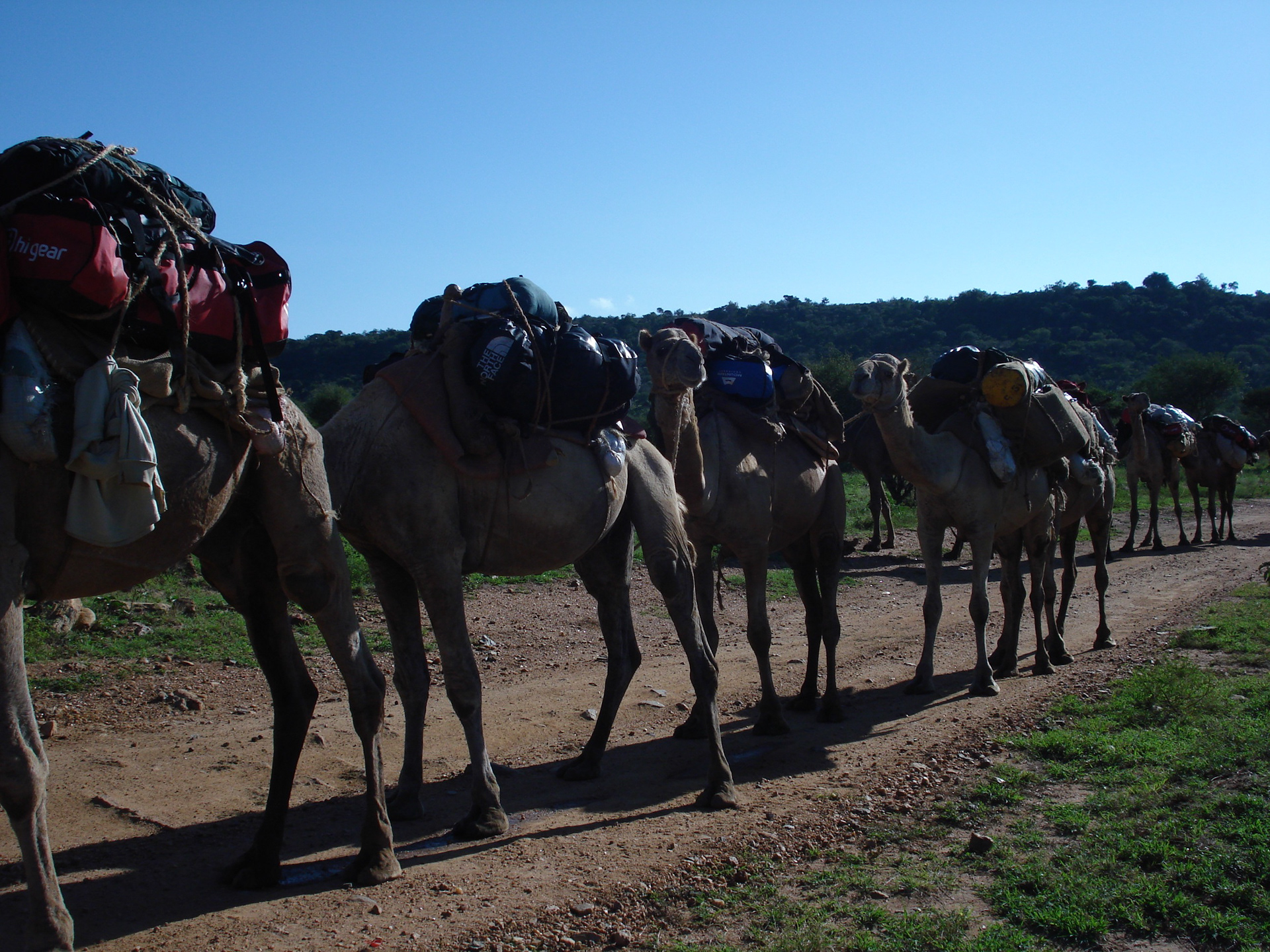
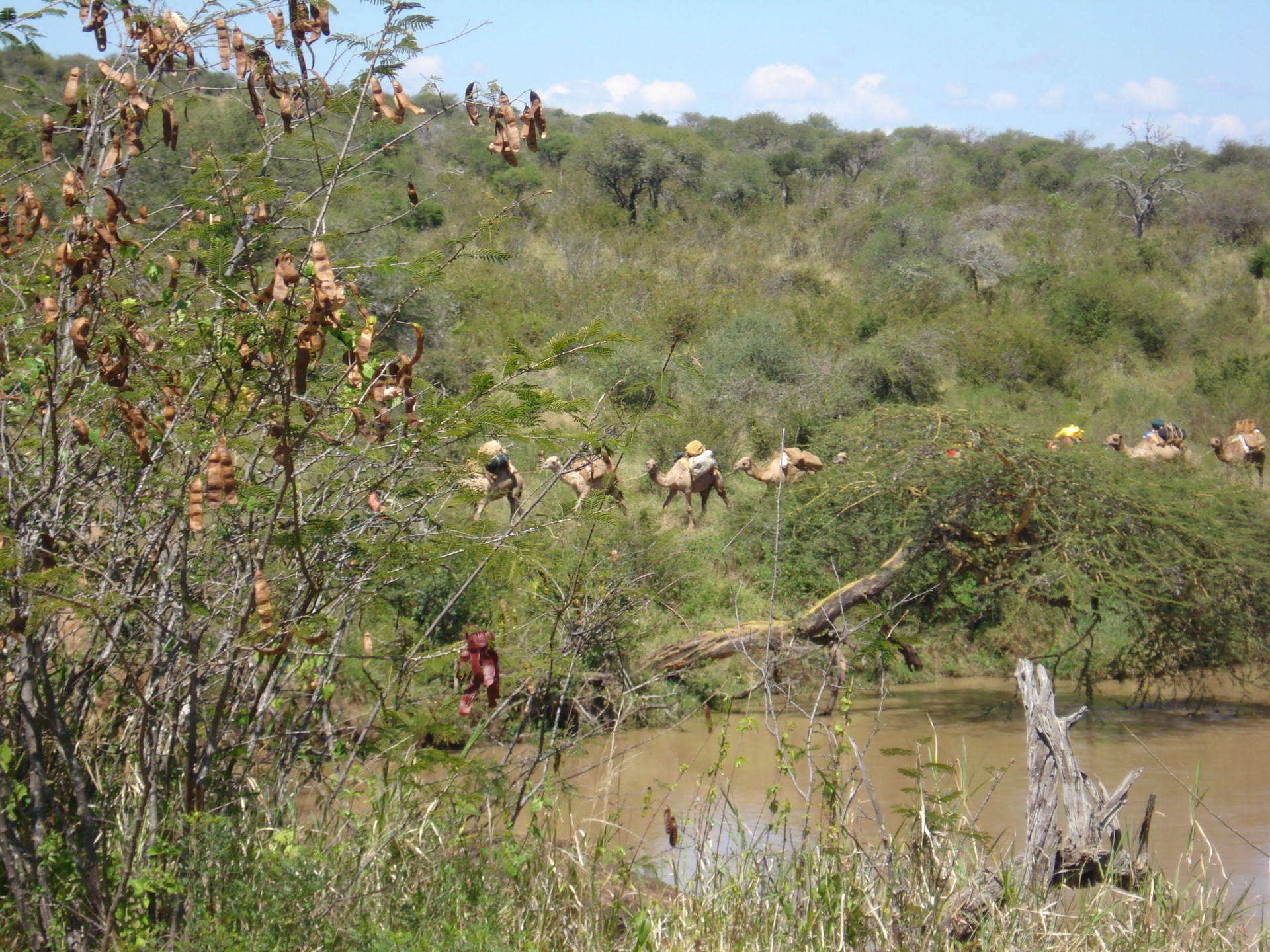

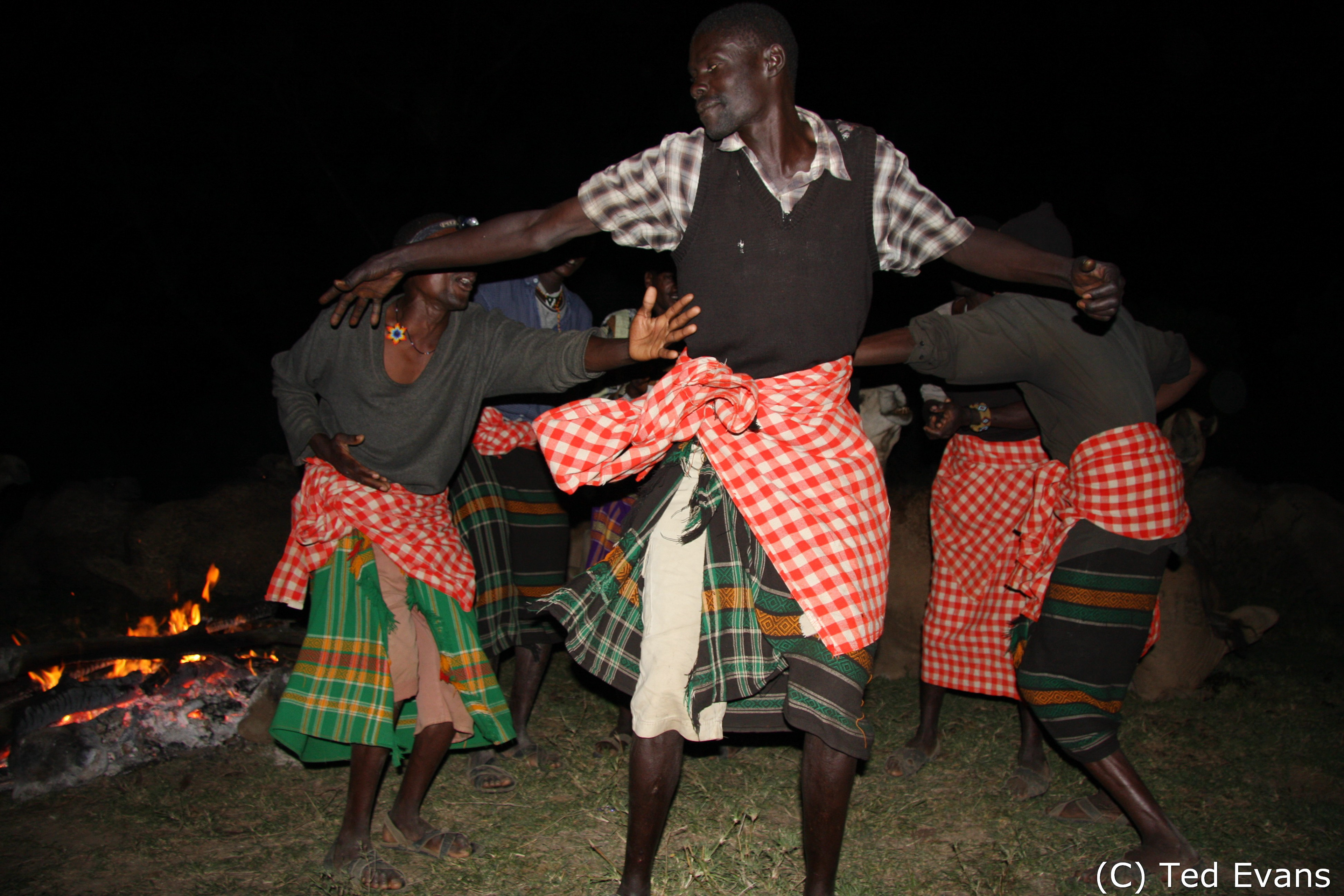

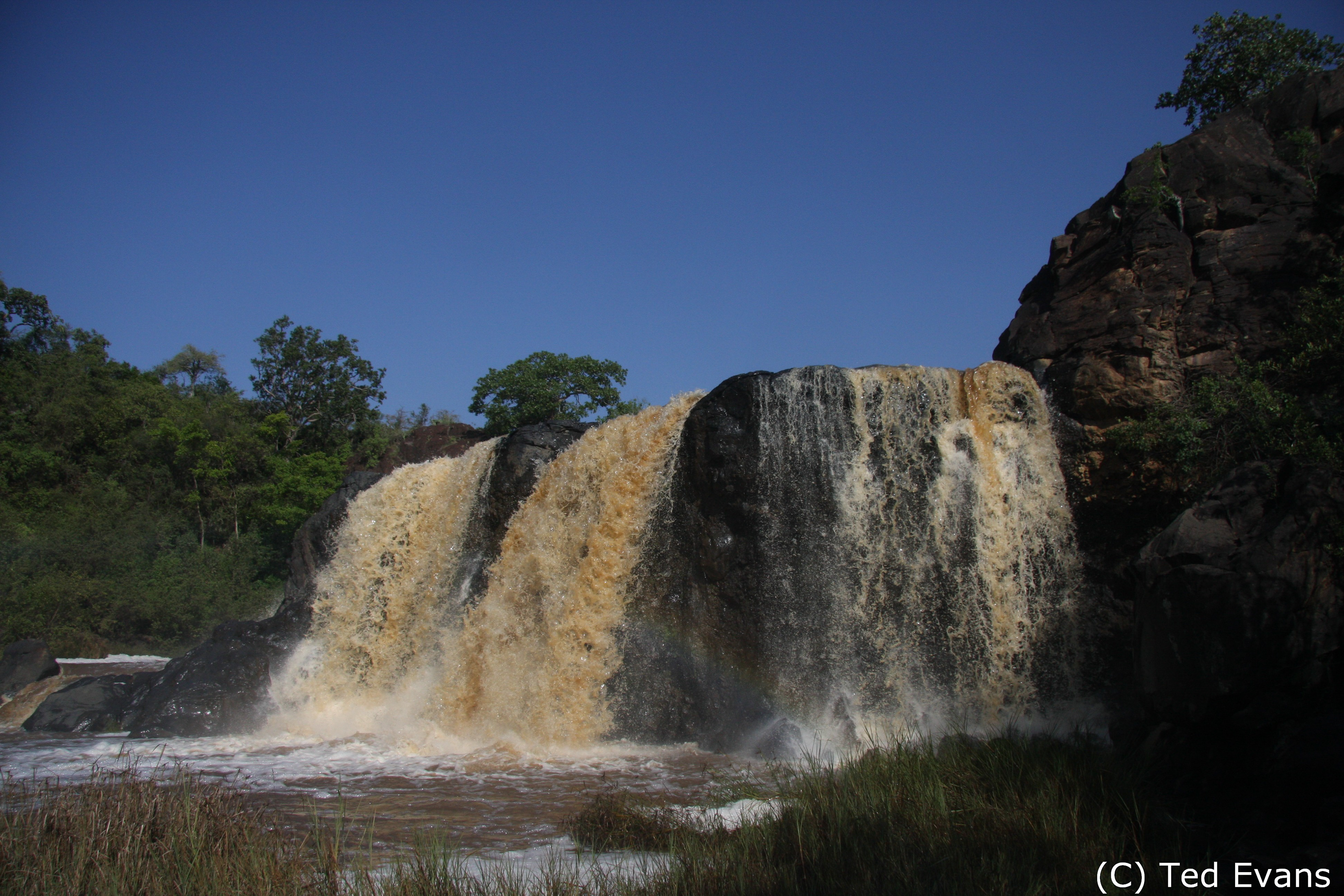
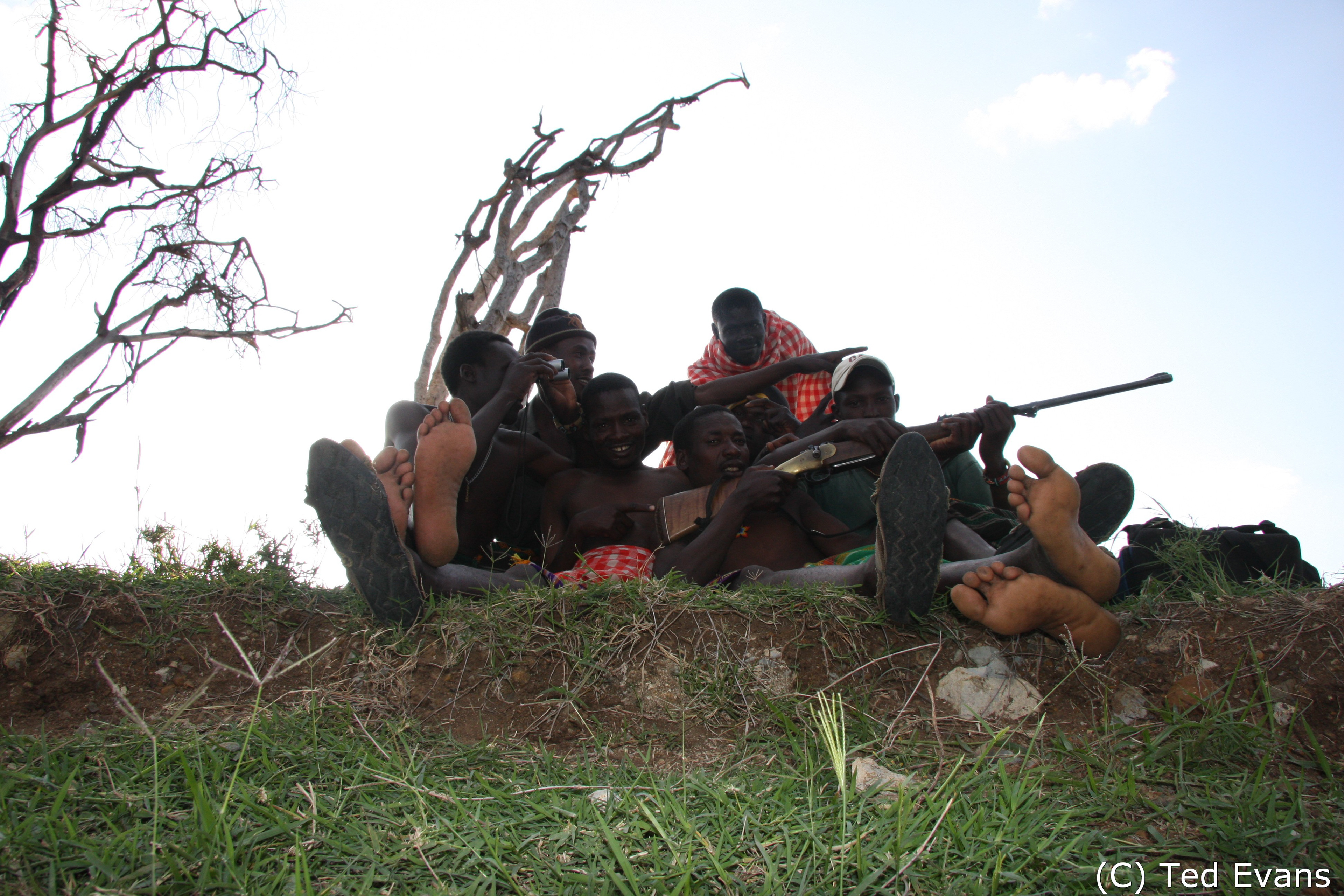
The groups returned to Ol Maisor camp in good spirits, singing loudly as they came down the track having had what can only be described as a unique and unforgettable experience.
COMMUNITY PROJECT
We had arranged with Martin, who owned Ol Maisor, to have supplies ready at the build site and so soon after arrival we began the construction of a school building. Using shuttering with local stone and concrete we began the process of building the walls.
At the same time, we also refurbished an existing wooden building housing classrooms, repainting, repairing internally and externally. Guttering was reformed and refitted.
We worked on the Ol Maisor school project on our first visit and incorporated work at Island School, Rumuruti on our second, also completing work at Ol Maisor school. It was hard work in the heat of the day. Stone was hand collected, loaded onto a trailer and taken to the site. Together with concrete the stone was put between wooden shuttering to construct the outer wall. This process was repeated until the external walls were completed, supported by cast-concrete posts. The outer walls were then pointed where necessary.
The British Army trained in the area and the Ghurka Regiment completed, and complimented, our work. We can now proudly say that Central Yorkshire Scouts has a lasting legacy in Laikipia, Kenya.
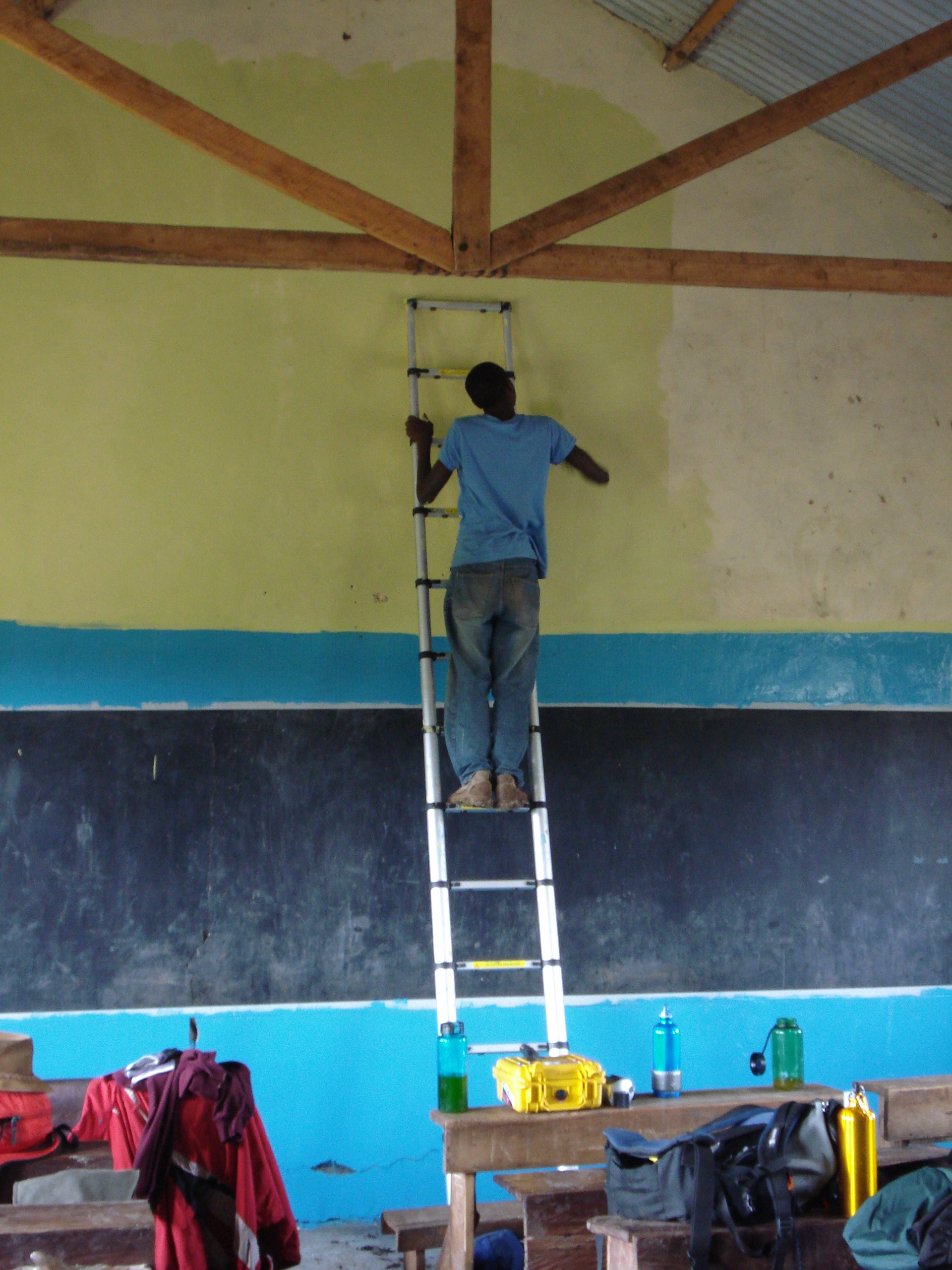

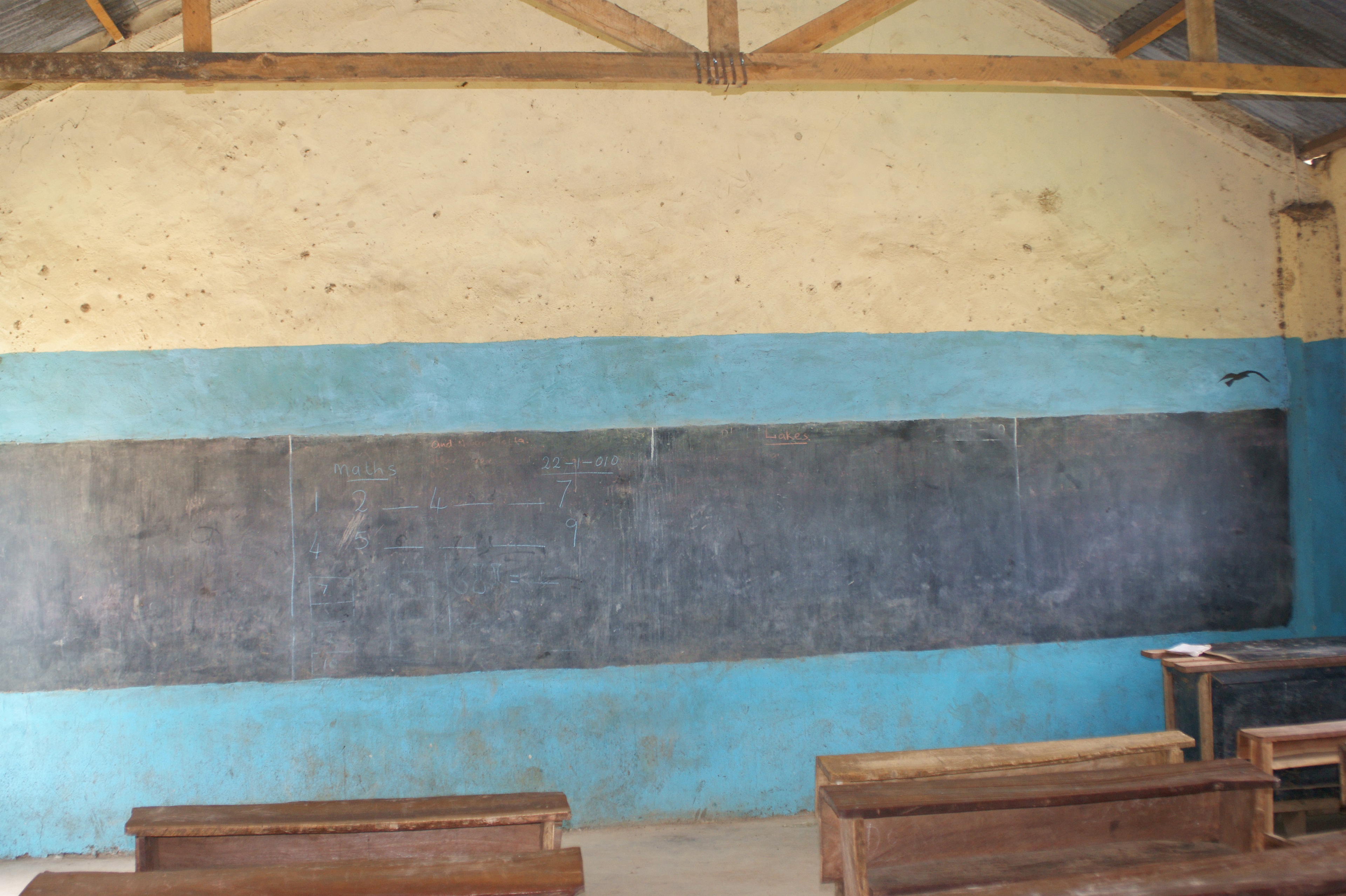


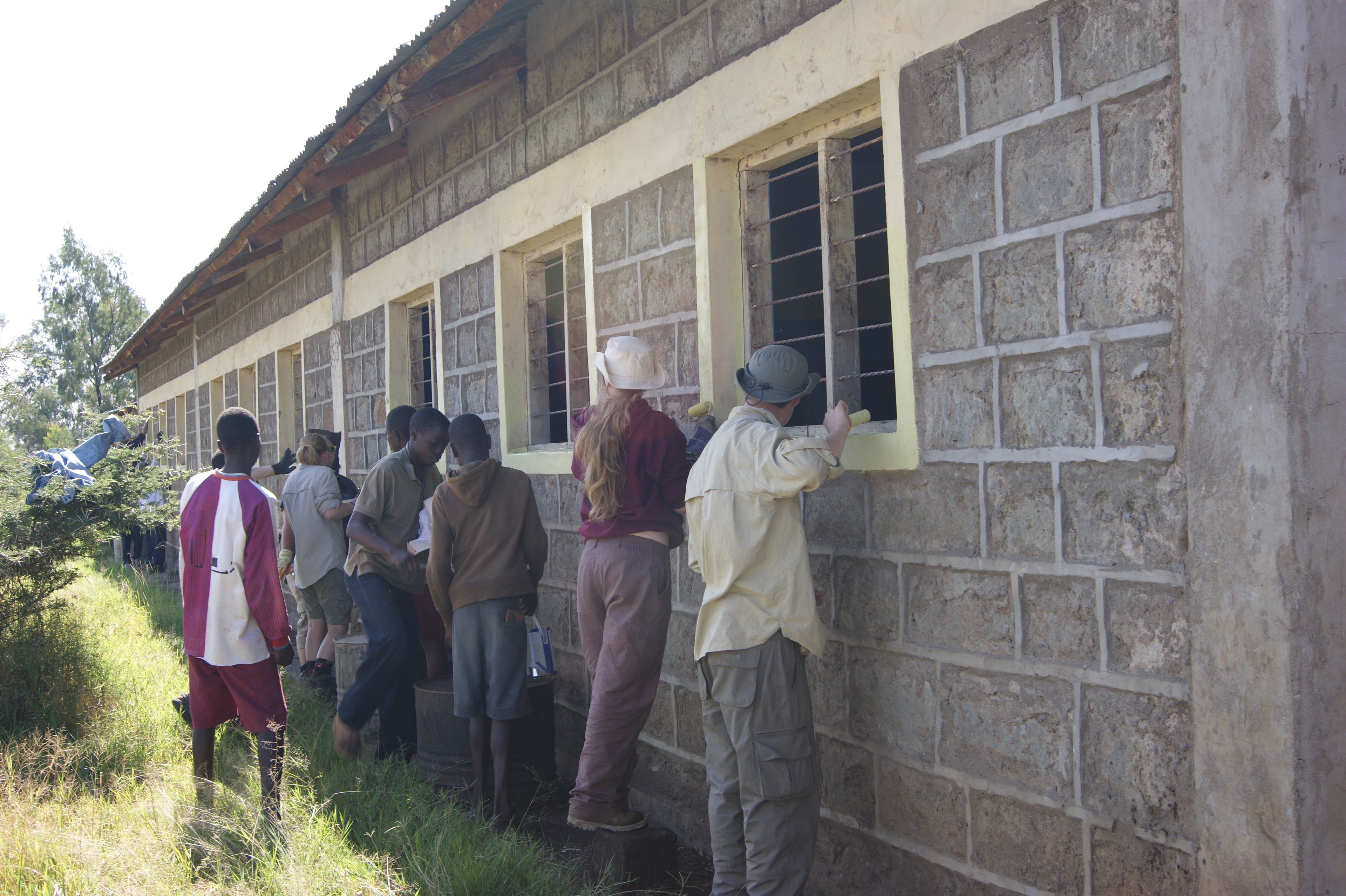







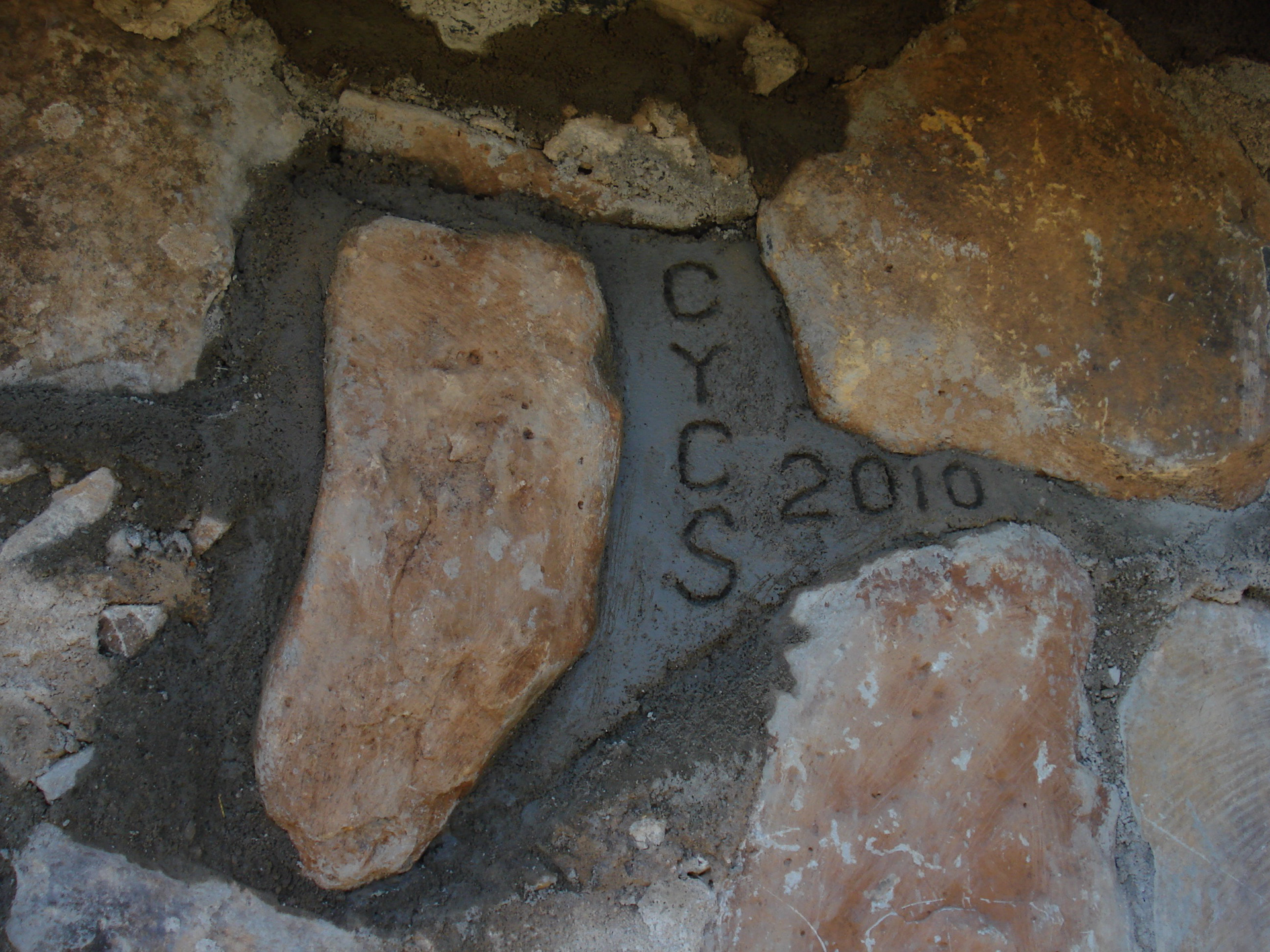
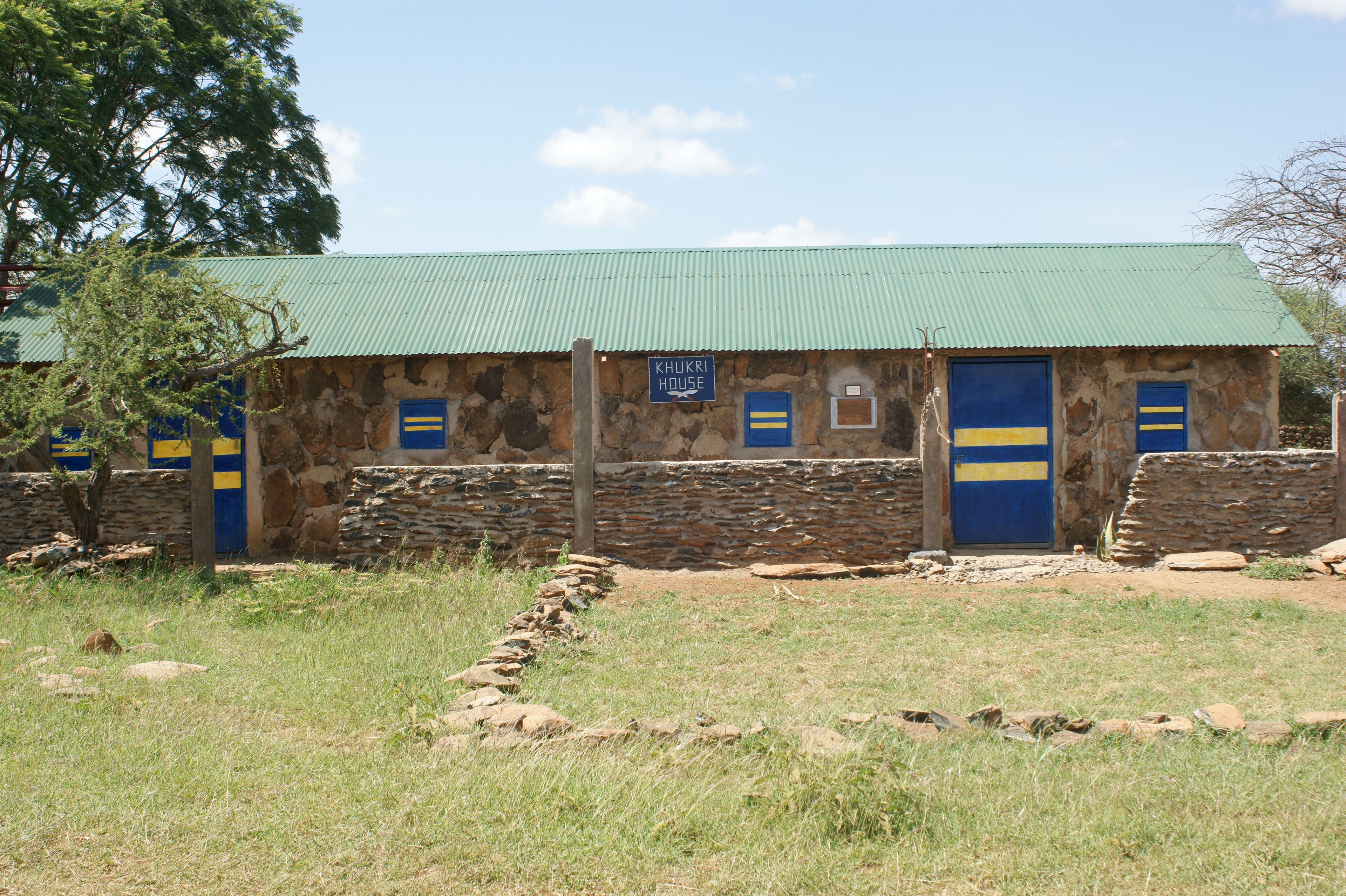
After the trek and mountain groups returned the expedition headed, via Hillcrest School, to the reserves of Masai Mara and Amboseli for the two expeditions.


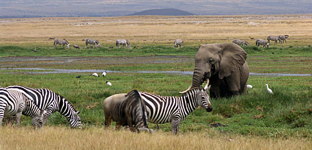
On the first we travelled to the Kenya/Tanzania border, to the Mara River. It was full of wildebeest carcasses with vultures and other predators feeding. The sky above was like Heathrow on a busy day with vultures circling and waiting their turn to land and feed. The annual migration of the wildebeest is often shown on wildlife programmes with huge numbers trying to cross the Mara River without succumbing to the very large crocodiles laying in wait. We were witnessing the aftermath of that crossing. Annually more that 1.5 million wildebeest migrate in an enormous loop around the plains of Tanzania and Kenya in search of greener pastures.
I remember watching two cheetahs walk past me in the night, their eyes glowing in the vehicle headlights. They were large, lithe animals and sauntered past without a care, a close encounter I'll not forget.
The expedition saw lion hunting, herds of elephant and zebra as well as wildebeest, in fact most of the big game.
In Amboseli we camped at the edge of the reserve with Kilimanjaro as a backdrop.
The expedition(s) went to the Carnivore restaurant in Nairobi for a final dinner before flying home. I thought I had covered most things in the risk register, but not for one of the Kenyan boys falling into the pond at the restaurant, walking backwards for a photograph.
The Kenyan boys did not have adequate footwear when they joined us so I took them to the shoe store in Karen and bought each a pair of desert boots. It was the first time they had been into such a shop and had their feet measured. They were very proud of their new footwear. They are cherished moments.
It is a challenge taking large numbers of young people on an expedition but the rewards out-do the task. To have the young person for three weeks and hand them back (in one piece) to their parents as changed young people is the reward for all of the leader team's hard work.
Kenya is a magical, inspiring, awesome country.